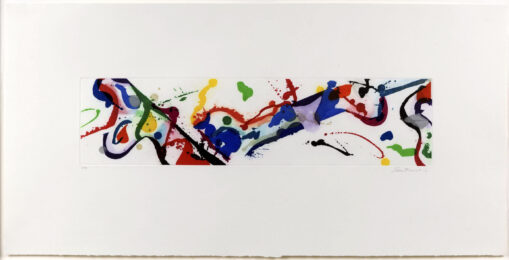

Who can legally issue a certificate of authenticity for a work of art? Well, I can. After all, I founded and directed a graduate program in art connoisseurship, I’ve published lots of articles on print connoisseurship, I have a doctorate from Harvard, I have years of experience dealing in prints…
But guess what? So can you! That’s right! No matter who you are, and no matter how much or how little you know about prints, you can issue a certificate of authenticity.
A certificate of authenticity is worthless unless it’s from a recognised expert in the appropriate field. For example, if you want a certificate of authenticity for a print by Miró, your best bet is to take the print to the Miró Foundation (Fundació Miró) in Barcelona. At the Foundation they have a complete collection of all of Miró’s prints, originally donated by Miró himself. They can compare your print to theirs, and if they match, yours is authentic.
Many crooks who sell fake prints issue “certificates of authenticity”. Since the people are crooks, the certificates are worthless. The certificates do not list the qualifications of the issuer. The certificates do not have the name and address of an established gallery where you can go to demand a refund if the print turns out to be fake. At best there’s a phone number—often a cell phone number—of someone you know nothing about. Or the address of somebody’s apartment God knows where….
Sometimes the certificates come from fictitious galleries or organisations with grandiose names: “European Fine Art Gallery”, “Société de la nouvelle gravure”, “New York Galleria”, “National Art Brokerage”, “National Art Guild”, etc.
Many bogus certificates include the phrase “complimentary hand signature”. In English, the word “complimentary” means “free, without charge”. Thus it makes no sense in this context. I have never seen a legitimate certificate that mentioned a “complimentary” signature.
These ridiculous certificates remind me of an old joke. A woman finds out that her son, a lawyer, is defending a man accused of killing his wife.
“How can you defend such a monster?” she asks him.
“Mom, he says he’s innocent.”
“If he’d kill his wife, he’d lie.”
Well, if they’d sell you a fake print, they’ll give you a fake certificate along with it.
About the author
Dr William Cole, a recognised expert in art connoisseurship, is director of the Sylvan Cole Gallery. His articles have appeared in Print Quarterly, Art in Print, Word & Image, and other leading journals. His most recent book is a catalogue raisonné of the illustrated books and print portfolios of Masafumi Yamamoto.